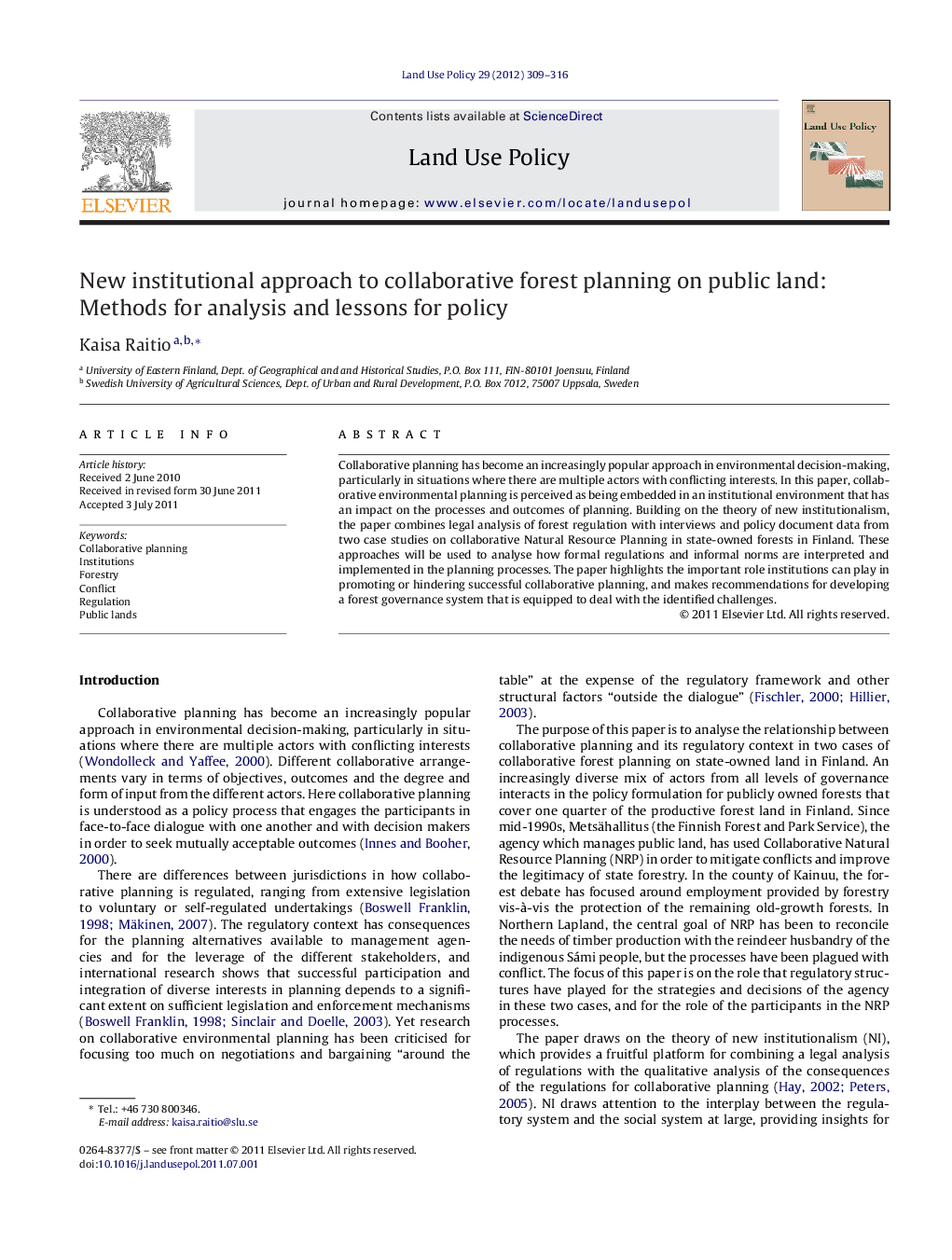| Article ID | Journal | Published Year | Pages | File Type |
|---|---|---|---|---|
| 93306 | Land Use Policy | 2012 | 8 Pages |
Collaborative planning has become an increasingly popular approach in environmental decision-making, particularly in situations where there are multiple actors with conflicting interests. In this paper, collaborative environmental planning is perceived as being embedded in an institutional environment that has an impact on the processes and outcomes of planning. Building on the theory of new institutionalism, the paper combines legal analysis of forest regulation with interviews and policy document data from two case studies on collaborative Natural Resource Planning in state-owned forests in Finland. These approaches will be used to analyse how formal regulations and informal norms are interpreted and implemented in the planning processes. The paper highlights the important role institutions can play in promoting or hindering successful collaborative planning, and makes recommendations for developing a forest governance system that is equipped to deal with the identified challenges.
► The paper combines legal analysis with qualitative data from two case studies. ► Lack of regulation creates inconsistency between planning processes by one agency. ► The more general the formal regulations, the more important informal norms become. ► New institutional analysis helps to identify dynamics and challenges in planning. ► Collaborative planning needs to be supported by adequate institutions.
